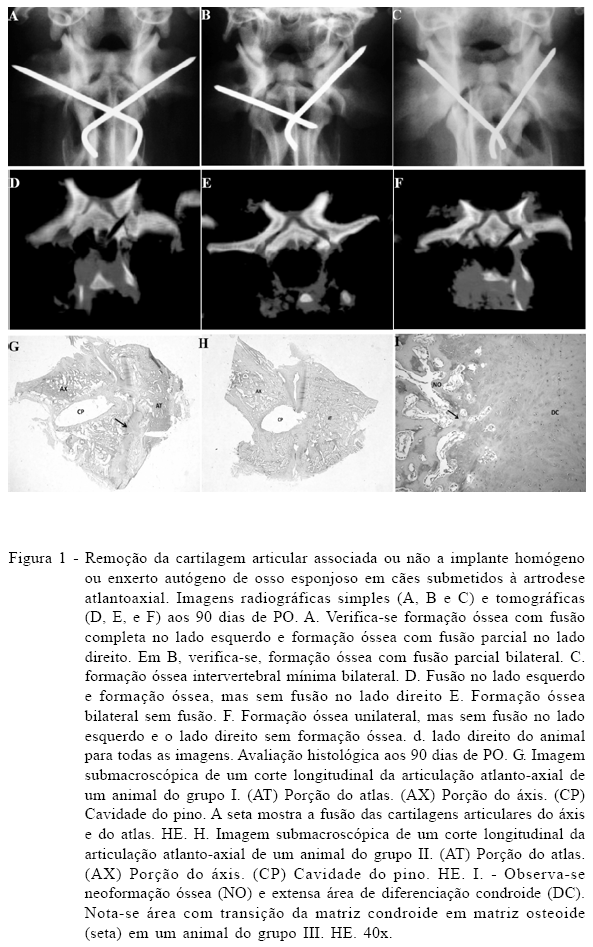The aim of this study was to evaluate the degree of joint fusion and bone formation in dogs undergoing atlantoaxial arthrodesis after removal of articular cartilage associated or not to implant homogenous or autogenous cancellous bone. Twelve dogs, weighing between 8 and 12kg were randomly divided into three groups. Group I (GI) performed only the removal of joint cartilage and joint immobilization with acrylic resin and pins. Group II (GII): after removel of joint cartilage and articular immobilization was performed modeling and placement of homogenous cancellous bone at the given location. The volume of homograft placed in the joint was measured using a precision balance and all animals received the same amount. Group III (GIII): this was the same procedure as GI, however, was used autogenous cancellous bone graft at the given location. Radiographic examinations were performed on all animals at 30, 60 and 90 days postoperatively. At 90 days of PO was carried out euthanasia of animals for testing of manual palpation and CT evaluation and histological. Samples were kept in solution in 10% buffered formaldehyde for fixation for a minimum of 72 hours and after, decalcified in formic acid and sodium citrate for subsequent processing and included in paraffin. Sections were stained with hematoxylin-eosin for light microscopy evaluation. Statistical analysis of the association between the degree of joint fusion assessed by manual palpation, the digitized radiographic images and CT scans and treatment groups, we applied the Chi-square test of independence. The test results were evaluated by the exact significance and considered statistically significant at 5% significance (P<0.05). By manual palpation test and by the CT images can be seen that there was no statistically significant difference between groups at 90 days postoperatively. Radiographic analysis of the atlantoaxial joint showed that the degree of fusion was similar among treatments, no statistical difference at 30, 60 and 90 days postoperatively. Regarding the histopathological study of atlantoaxial joint of dogs after 90 days postoperatively was found that bone formation in group I had 25% of each intensity (absent, mild, moderate, severe) in group II, 75% lighter and 25% sharp and in group III, 25% moderate and 75% severe. It can be concluded that the use of graft homogenous preserved in 98% glycerin in dogs undergoing atlantoaxial fusion method is a viable alternative for treatment of atlantoaxial instability. There is no difference in the degree of joint fusion and bone formation when the technique of atlantoaxial arthrodesis in dogs is associated with autogenous cancellous bone graft or implant homogenous. The removal of articular cartilage alone is an effective and shows similar results to the use of autograft or homogenous implant.
atlantoaxial instability; cancellous bone; neurology; dog

